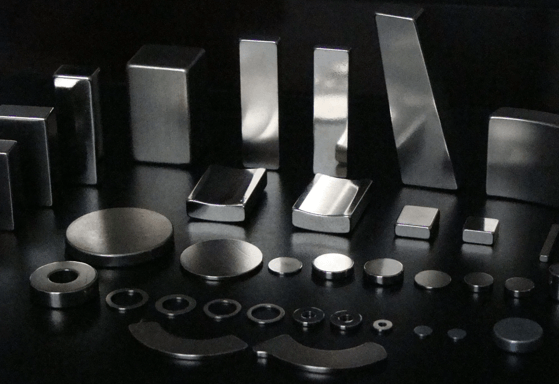When working temperatures exceed 1000°C, or when environments contain corrosive substances like strong acids or alkalis, most metal materials cannot withstand these extreme conditions. However, nickel-based alloys maintain excellent strength at high temperatures and resist corrosion effectively. Although they come at a higher cost, they ensure equipment operates safely and reliably in extreme environments. QD is the primary foundry manufacturer of nickel-based alloy castings.
What are Nickel-Based Alloys?
Nickel-based alloys are high-performance metal materials. Nickel is the main element (usually over 50%). They also contain alloying elements like chromium, molybdenum, iron, cobalt, and tungsten. These alloys maintain stability in high temperatures and corrosive environments. They resist phase changes and softening.

Common nickel-based alloys and their main components include:
| Alloy Series | Main Components | Characteristics |
| Inconel 718 | Nickel, Chromium, Iron, Vanadium, Aluminum | High strength at high temperatures, resists oxidation |
| Hastelloy C-276 | Nickel, Chromium, Molybdenum, Tungsten | Excellent corrosion resistance, resists pitting |
| Monel 400 | Nickel, Copper, Iron | Resists seawater corrosion, good mechanical properties |
| Incoloy 800 | Nickel, Chromium, Iron | Resists high temperature oxidation. Suitable for heat exchangers |
Core Capabilities of Nickel-Based Alloys
Nickel-based alloys are the preferred material for extreme environments. They possess these core capabilities:
High-Temperature Strength
When temperatures exceed 800°C, reaching a red-hot state, regular steel softens quickly. However, nickel-based alloys retain remarkable strength. They show high tensile strength, creep strength, and fatigue resistance at high temperatures. Their performance far exceeds most other metals. This makes them ideal for jet engine turbine blades.
Excellent Corrosion Resistance
Nickel-based alloys resist attack from many acids, alkalis, and oxidizing media. This includes highly corrosive substances like sulfuric acid, hydrochloric acid, and hydrofluoric acid. Some alloys perform well in both oxidizing and reducing conditions. They show almost no pitting or stress corrosion cracking.
Oxidation Resistance and Wear Resistance
In high-temperature air, nickel-based alloys form a dense chromium oxide layer on the surface. This effectively prevents further oxidation. Additionally, some nickel-based alloys offer good wear and erosion resistance. They are suitable for high-speed fluid handling equipment.
Nickel-Based Alloy Performance Comparison
| Performance Indicator | Standard Stainless Steel (304) | Nickel-Based Alloy (Inconel 718) | Advantage |
| Maximum Service Temperature | Approx. 800°C | Approx. 1000°C | Nickel-based alloys suit higher temperature environments |
| Corrosion Resistance (Acidic) | Medium | Very Strong | Shows almost no corrosion in strong acids |
| Creep Strength (700°C) | Low | High | Minimal deformation under long-term high temperature |
| Cost | Low | High | Nickel-based alloys have higher initial cost but longer service life |
Wide Range of Applications
Nickel-based alloys are widely used in the following key fields:
Aerospace
- Jet engine turbine blades
- Combustion chamber components
- Rocket engine nozzles
Energy & Chemical Industry
- Furnace tubes and reactor parts
- Turbine discs and valves
- Heat exchangers
Power Industry
- Gas turbine components
- Nuclear power plant equipment
Medical & Marine Engineering
- Implants and surgical instruments
- Seawater desalination units

Challenges and Solutions for Nickel-Based Allels
Although nickel-based alloys offer outstanding performance, their application faces several challenges:
High Raw Material Costs
Alloying elements like nickel, chromium, and molybdenum are expensive. Global supply chains are also prone to fluctuations. This leads to high initial investment for nickel-based alloy castings.
Difficult Casting Process
Nickel-based alloys have high melting points, often exceeding 1300°C. The molten metal has poor fluidity. It is prone to hot cracking and gas porosity. Furthermore, the alloy elements are highly reactive and can react with mold materials, affecting casting quality.
Stringent Quality Control Requirements
Castings must undergo non-destructive testing (like X-ray, ultrasonic) and metallographic analysis to ensure they are defect-free. Heat treatment processes also require precise control to optimize performance.

QD’s Solutions
As a professional foundry, QD addresses these challenges through the following methods:
Advanced Melting Equipment: We use Vacuum Induction Melting (VIM) and Electroslag Remelting (ESR) technologies. This reduces impurities and increases metal purity.
Precision Casting Process: We employ investment casting and ceramic shells. This ensures dimensional accuracy and surface quality for complex-shaped castings.
Strict Quality Control: Every batch of castings undergoes chemical analysis, mechanical property testing, and non-destructive testing.
Customized Services: We design alloy compositions and heat treatment processes based on the customer’s operating conditions. This optimizes the balance between cost and performance.

Nickel-Based Alloy Casting Process
To ensure casting performance, QD follows a strict manufacturing process:
Design & Simulation: We use CAD/CAE software for 3D modeling and casting process simulation. This predicts defects and optimizes the process.
Mold Preparation: We produce precise wax patterns and ceramic shells. This ensures complex casting shapes and a smooth surface finish.
Melting & Pouring: We melt the alloy in a protective atmosphere. We control the pouring temperature and speed. This prevents oxidation and inclusions.
Heat Treatment: We apply solution treatment and aging treatment. This adjusts the alloy’s microstructure. It enhances strength and toughness.
Machining & Inspection: We perform machining to achieve final dimensions. We use X-ray and penetrant testing to ensure the castings are defect-free.
Key Control Points in QD’s Casting Process:
| Process Stage | Control Points | Objective |
| Melting | Temperature, Atmosphere, Composition Uniformity | Reduce impurities, increase purity |
| Pouring | Pouring Speed, Mold Preheating | Prevent premature solidification and gas pores |
| Heat Treatment | Temperature Curve, Soaking Time | Optimize grain structure and properties |
| Inspection | Non-destructive Testing, Mechanical Property Testing | Ensure compliance with standards |
QD has mature manufacturing capabilities for high-performance nickel-based alloy castings. Please feel free to contact QD for customized consultation and technical materials.
FAQ
1. Why are nickel-based alloys more expensive than regular steel?
Nickel-based alloys contain large amounts of precious metals like nickel, chromium, and molybdenum. Their smelting and casting processes are complex. Energy consumption is high. Quality control is strict. These factors lead to higher costs.
2. What is the service life of nickel-based alloy castings?
With proper design and maintenance, nickel-based alloy castings can last for decades.
3. What are QD’s advantages in nickel-based alloy casting?
QD has years of specialized experience. We are equipped with vacuum melting furnaces and precision testing instruments. We provide full-process services from design to finished products. This ensures stable casting performance and on-time delivery.
4. How to select the right nickel-based alloy?
Selection depends on operating temperature, corrosive media, stress conditions and other factors. QD engineers provide free consultations to recommend the most cost-effective alloy solution.
5. Do nickel-based alloy castings require special maintenance?
Routine maintenance is similar to regular castings. However, we recommend periodic non-destructive testing, especially in high-temperature and corrosive environments.
6. What is QD’s delivery lead time?
Lead time typically ranges from 4 to 8 weeks, depending on casting complexity and quantity. By optimizing our production process, we minimize lead times to meet urgent customer needs.
